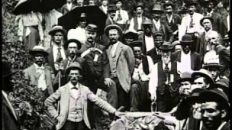The Seventh-day Adventist Church is the largest of several Adventist groups which arose from the Millerite movement of the 1840s in upstate New York, a phase of the Second Great Awakening. William Miller predicted on the basis of Daniel 8:14–16 and the “day-year principle” that Jesus Christ would return to Earth between the spring of 1843 and the spring of 1844. In the summer of 1844, Millerites came to believe that Jesus would return on October 22, 1844, understood to be the biblical Day of Atonement for that year. Miller’s failed prediction became known as the “Great Disappointment”.
Hiram Edson and other Millerites came to believe that Miller’s calculations were correct, but that his interpretation of Daniel 8:14 was flawed as he assumed Christ would come to cleanse the world. These Adventists came to the conviction that Daniel 8:14 foretold Christ’s entrance into the Most Holy Place of the heavenly sanctuary rather than his Second Coming. Over the next few decades this understanding of a sanctuary in heaven developed into the doctrine of the investigative judgment, an eschatological process that commenced in 1844, in which every person would be judged to verify their eligibility for salvation and God’s justice will be confirmed before the universe. This group of Adventists continued to believe that Christ’s Second Coming would continue to be imminent, however they resisted setting further dates for the event, citing Revelation 10:6, “that there should be time no longer.”

























